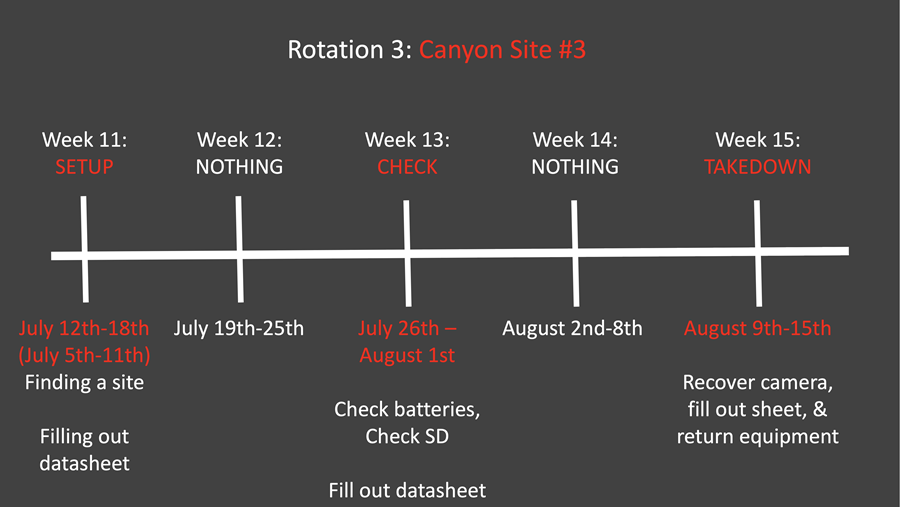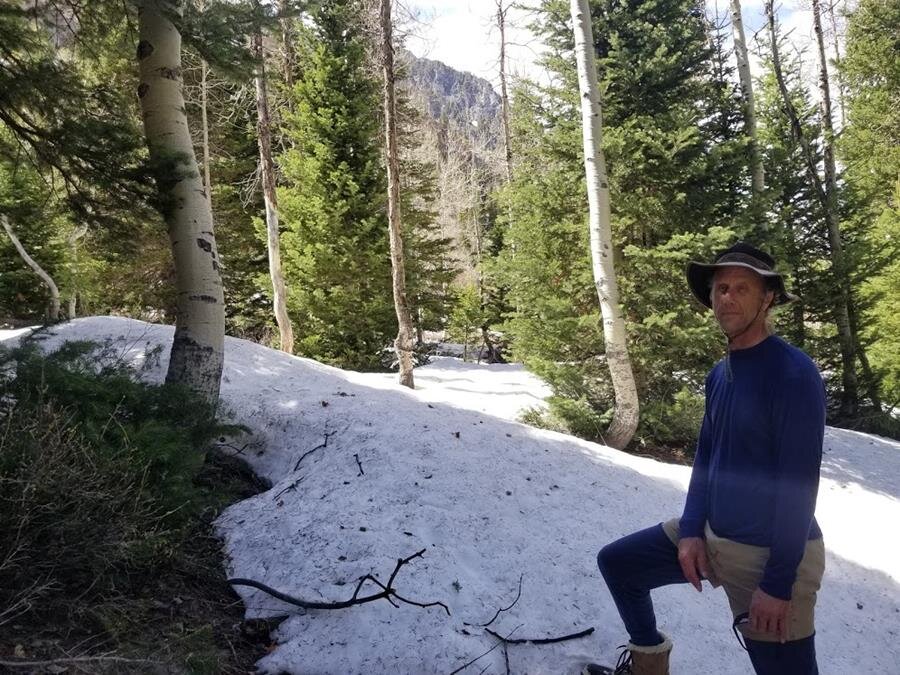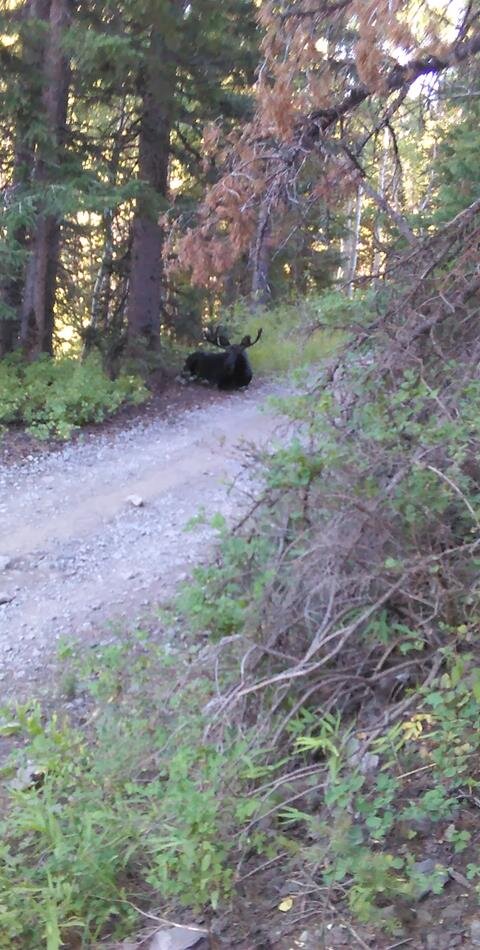Week 11 on Wasatch Wildlife Watch: Camera Setup for Rotation 3
Wasatch Wildlife Watch Volunteer,
Week 11 on Wasatch Wildlife Watch is starting soon! To begin Rotation 3, locate a site and set up your camera by Sunday, July 18. Remember to fill out your data sheet.
If you are NOT able to complete the visit as planned, please let Austin know ASAP. (No need to reach out if everything is going according to plan!)
Photos and Wildlife Conservation
Ever wondered what happens to your photos once your camera is taken down? They become much more than just cool photos!
We can use the information from your camera sites to estimate population trends, predict wildlife hotspots, and identify behavioral adaptations, all to the benefit of on-the-ground conservation and management.
As an example, here is a paper on how camera trap data can be used to monitor population density across time, one of the most important ways scientists and managers monitor wildlife populations. And take a look at the results from a recent analysis from Wasatch Wildlife Watch! The proportions listed are actual probabilistic statements of how likely a given species is negatively or positively associated with urbanization.
Volunteer Highlights
Volunteer Highlight Justin Young setting up a camera.
Justin Young
This is Justin's second year as a Wasatch Wildlife Watch community scientist. Thank you for your work, Justin!
What has been your favorite part of volunteering? "Every year I’ve been assigned locations along the Wasatch where I’ve never been. Getting to explore these different areas and then actually seeing the wildlife that frequent them, either in photos or in person, is always amazing to me."
Why is conservation important to you? What keeps you coming back to volunteer? "I have a tremendous passion for wildlife conservation. Currently I am a student at Unity College focusing on my degree in Wildlife Conservation. My goal is to become a wildlife biologist or a conservation officer. Volunteering is important to me because it gives an organization the ability to collect more data, and the volunteer feels accomplished knowing they are doing an important service for wildlife and the community."
What have you learned as a volunteer? "I have learned that data collection takes patience. Not all data collected is exciting, but it is all valuable. Also, high elevation hiking is tough business. If you get a camera spot in strenuous areas make sure you are capable of hiking the distance and have a lot of water on you."
Pete Mimmack
How did you first learn about Wasatch Wildlife Watch? How long have you been involved? "This is my third year as a Watcher. I got involved due to the prompting of my wife, who has been a Natural History Museum of Utah volunteer. When she saw the notices about Wasatch Wildlife Watch, she thought it was the kind of volunteer activity that I'd enjoy. She was right."
Volunteer Highlight Pete Mimmack in the field.
Why is this project—and wildlife conservation in general—important to you? "We are not the only ones who live in Utah, and our four legged friends have been here much longer than we have. It's great to be documenting their domain and how they're dealing with the new neighbors. And it's producing some incredible experiences that I wouldn't have otherwise."
Any field stories you'd like to share? "At the end of the 2020 summer season, I was moving my camera to capture more data for the fall season. I was 50' from the site when I saw a moose just 100' away. Later, I was walking down the road thrilled with my encounter, when suddenly around a bend, I saw another bull moose sleeping on the road. I opted for the vegetation and was getting around him just fine when I heard a lot of noise in the woods just above me, and sure enough a third moose had been snoozing up there, just 100' away. I paused to make sure he wasn't coming my way, snapped a picture of the moose on the road, and quietly moved along to put some distance between us. Three bull moose in one hour was definitely a highlight of the season."
Thank you so much for your dedicated work over the years and seasons, Pete!
Don't Forget...
1 - An optional image analysis training is coming up soon! (We know we've said this over the last few emails, so thank you for your patience. The developers are working out a few more things on the site, and we're nearly ready to record the training video.) Sign up for the Image Analysis email list to receive updates.
2 - Make edits as needed to your completed Camera Rotation Schedule at any point in the season.
3 - Stay safe! Remember to go out with a partner when possible or let someone know where you're headed and when you'll return. Bring lots of water and learn about what to do if you encounter wildlife.
4 - You can order T-shirts at any point in the season.
Project Resources
General - For resources and updates all in one place, visit the Wasatch Wildlife Watch project page with everything from project flyers to t-shirts.
Facebook Page - Share stories and connect with other volunteers on the Wasatch Wildlife Watch Community Scientists Facebook page.
Poaching - If you encounter poaching, please do not confront the individual. Learn how to report poaching here.
Video Trainings - Please feel free to review the video resources at any time throughout the season:
Entire 2021 Training (1.5 hrs)
Training Videos (4 short videos covering camera installation, data sheets, using the Gaia GPS app, and camera setup)
Thank You
All the exciting findings, progress, and outcomes on the project are only possible because you're willing to get out there for wildlife. Thank you.
Happy hiking,
The Wasatch Wildlife Watch Team





